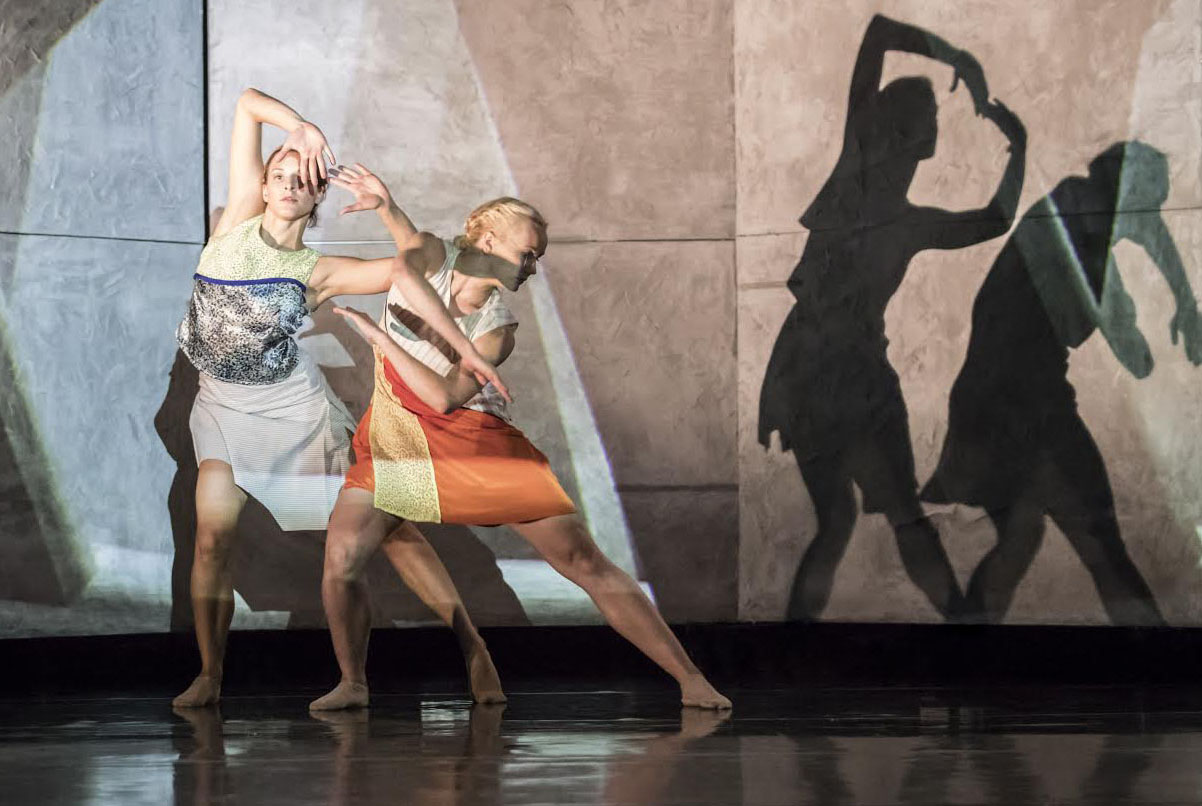
You have to hand it to Rambert. For this, their 90th anniversary season, the company hasn’t flinched from producing challenging, sometimes esoteric works, including an ambitious reinterpretation of Macbeth on a split stage.
As well as Rambert’s young, fabulously athletic dancers, with eye-catching dynamism from Miguel Altunaga, Hannah Rudd and Vanessa Kang in particular, the three pieces tonight were blessed with innovative scores and sets, not to mention some minimalist but extremely stylish costumes that could have fallen from the pages of Vogue or Harpers Bazaar.
The evening began with Flight, a piece described by choreographer Malgorzata Dzierzon as, “addressing our obsession with borders, as we continually replace one set of limitations with another,” and “how we organise ourselves in crowded spaces.”
Against five movable wall panels onto which shimmering butterflies were initially projected, dancer Liam Francis began by conveying a sense of unfolding, a need for exploratory movement, as with an insect gradually unfurling itself, testing mechanics before committing to flight. Francis was gradually joined by 13 other performers, restlessly weaving patterns as couples or as ensemble, making and remaking themselves into pulsing amoebas, always seeking new forms. In this they were helped by some beautiful playing on solo violin by Richard George and Yshani Perinpanayagam on piano, with cascades of notes punctuated by strong support from other members of the Rambert Orchestra.
At the apex of the piece the wall panels were reconfigured into a rotating carousel-like structure. Varying combinations of dancers, captive between sections, seemed alternatively to enact imprisonment or freedom, some with room to move, some not, but all were tied to this same spinning micro world.
Patricia Okenwa’s mesmeric piece, Hydrargyrum, was my personal favourite of the night. Her first commission for the Rambert touring repertoire, on the evidence of this work, she looks to have a very bright future with the company.
In one of the most exciting starts to a composition I have ever seen in dance, a giant mirror was suspended over the entire stage, giving the impression that the pit orchestra was actually floating above the performers. This awesome slow-spinning glass at once accentuated the shimmering, twitching, sometimes robotic movements of the six dancers beneath. Wearing dark jackets with high collars, and moving to a superbly ominous score from Aleksandra Vrebalov, the performers explored the properties of mercury – liquid silver – “a reflective, conductive medium with the potential to transform or poison; fluid when all others of its kind are solid.”
The excellent Rambert Orchestra, led by conductor and Music Director Paul Hoskins, was at its best for this piece, creating real menace with reverberating bass and percussion, and with controlled atonality and multi-layering of piano, accordion, strings and brass.
Arguably the most ambitious of the three pieces, the final third of the evening was choreographer Lucy Guerin’s Tomorrow. Her reinterpretation of the story and raw emotion within Macbeth started impressively with a narrow lit gap at the back of an otherwise darkened stage – a slim light beam reaching towards the audience. Above the stage, the focused ray from a long rectangular lightbox effectively split the space below in two. Hannah Rudd, as leading witch, appeared into this ‘force field’ and became a compelling, twisting and twisted fury, leading her six fellow coven members in a livid romp.
While the dastardly and emotional outpourings of the witches were always self-evident, I was never so sure about the concurrent ‘play’ enacted on the other side of the stage. As if the idea in itself wasn’t complicated enough, that Guerin ran it in reverse order was, I thought, just too much to chew on. Probably far too literally I found myself giving too much attention to signs of Burnham Wood or the frenzied washing of hands, neither of which seemed to materialise, or perhaps passed me by. And the spate of ‘killings’ just looked too random, without a clue as to who anyone was supposed to be. But as a spectacle – the cool black-shirted players on the left, the witches’ shindig on the right, divided by the power of light, was certainly memorable. ★★★★☆ Simon Bishop 28th October 2016
Photos by Johan Persson

